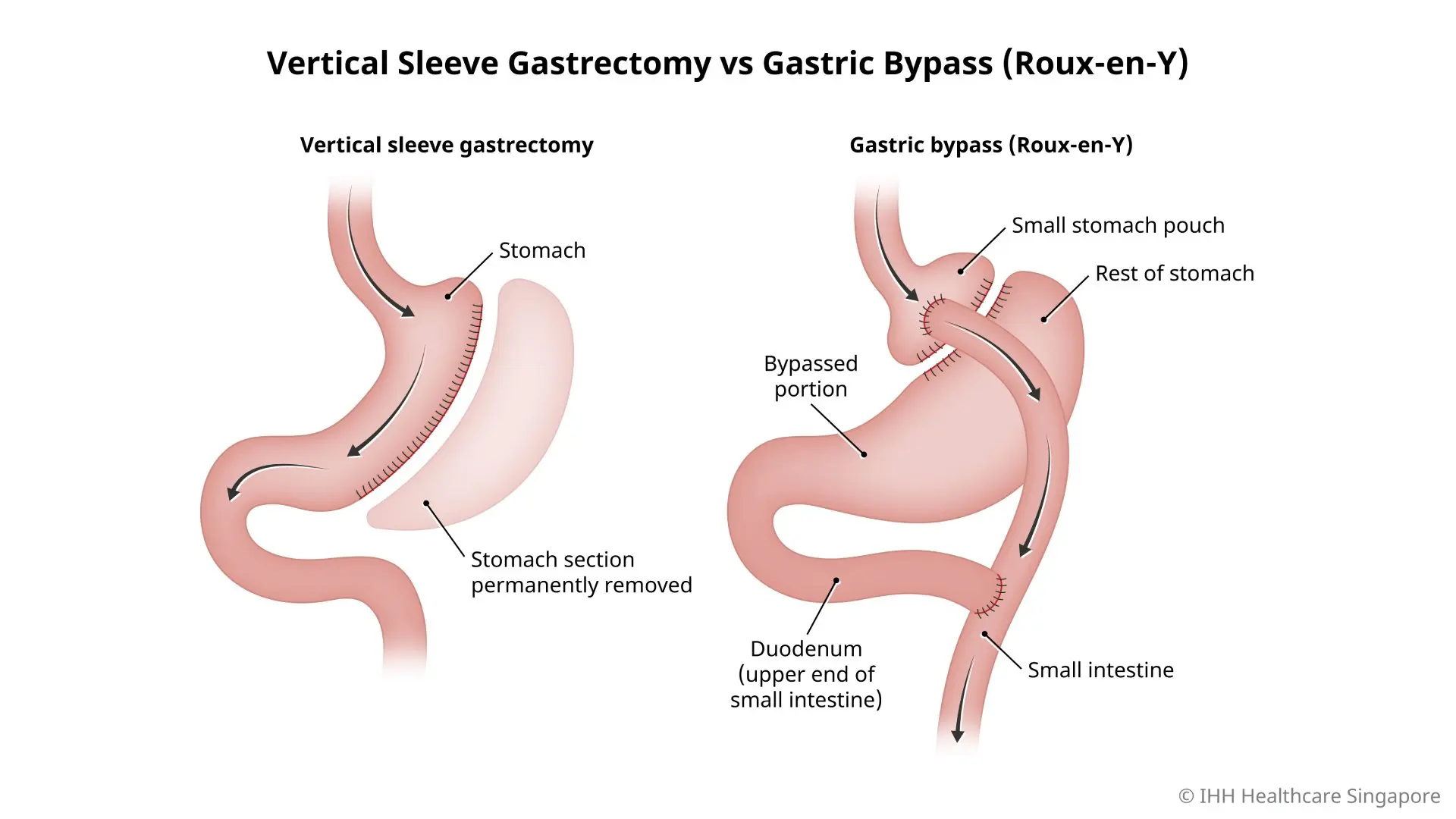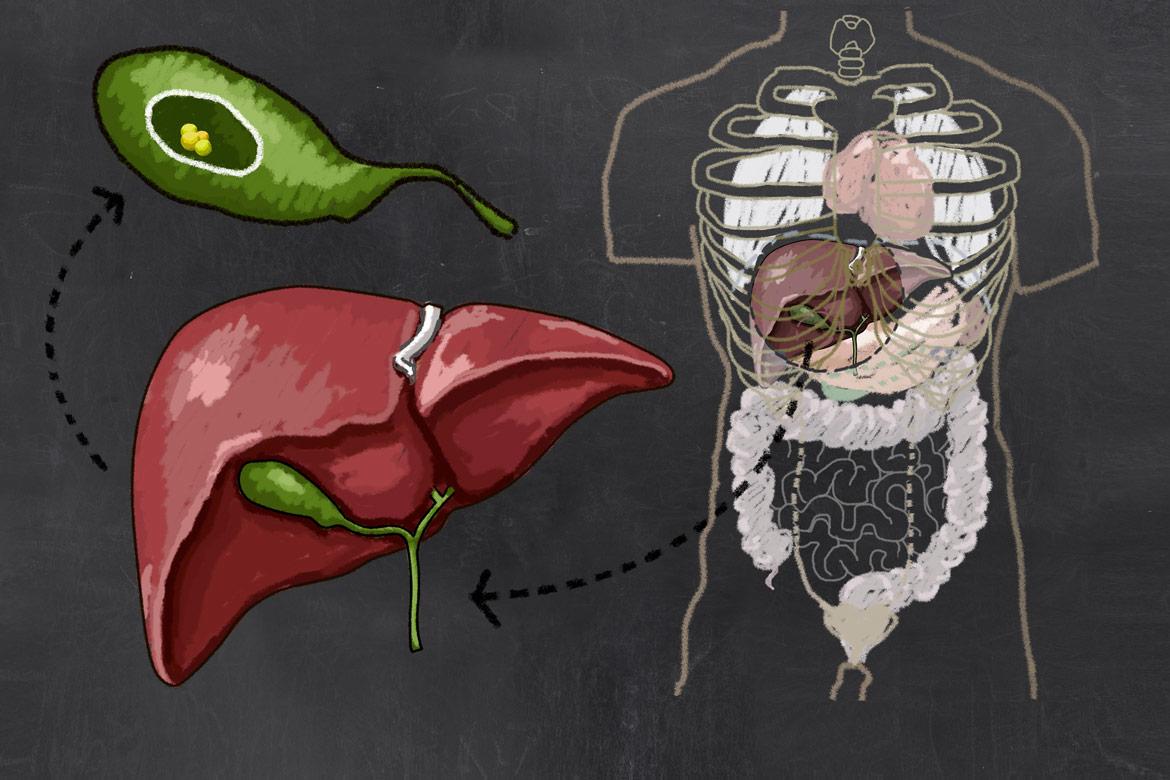Vertical Sleeve Gastrectomy (Gastric Sleeve Surgery)
What is a vertical sleeve gastrectomy (VSG)?
Vertical sleeve gastrectomy, also known as laparoscopic sleeve gastrectomy (LSG), is a type of minimally invasive metabolic surgery that converts the stomach into a long and narrow tube.
The procedure:
- Reduces the stomach by about 75% to limit the amount of food the stomach can hold.
- Removes the ghrelin, a part of the stomach where the hunger hormone is produced. The removal leads to hormonal changes that assist with weight loss and relieves conditions associated with being overweight, such as high blood pressure or heart disease.
The procedure is done laparoscopically, using small incisions in the body, which reduces risks compared to open surgery. This surgical method also results in less wound pain, fewer complications, a shorter hospital stay and faster recovery.
Why do you need a vertical sleeve gastrectomy?
Vertical sleeve gastrectomy falls under the category of bariatric (weight-loss) surgery. Bariatric surgeries are more effective than lifestyle, dietary and medical interventions to manage obesity and obesity-related disorders such as:
- Heart disease
- High blood pressure
- Hyperlipidaemia (high cholesterol)
- Obstructive sleep apnoea (caused by blockage of the upper airways)
- Type 2 diabetes
Obesity is defined as a body mass index (BMI) of 30, and it is usually linked with co-occurring conditions that lower life expectancy. Bariatric surgeries are currently the best method to reduce weight quickly and, more importantly, to sustain weight loss.
To qualify for bariatric surgery, you need to meet either of these requirements:
- A BMI over 37.5 and have no other co-occurring conditions
- A BMI over 32.5 and have one or more obesity-related disorders
Your doctor will determine whether you are a suitable candidate for bariatric surgery. Learn more about bariatric surgery, also known as metabolic surgery.
Vertical sleeve gastrectomy versus gastric bypass (Roux-en-Y)
Vertical sleeve gastrectomy differs from gastric bypass (Roux-en-Y), which is another type of weight-loss surgery. Your doctor will recommend the type of surgery that is most suitable for you.
| Vertical sleeve gastrectomy | Gastric bypass (Roux-en-Y) |
|---|---|
| Part of the stomach is permanently removed, leaving a small tube-shaped pouch that is directly connected to the small intestine. No other changes are made to the digestive system. |
Part of the stomach is clipped off so a small pouch remains. This new stomach pouch is attached to to a section of the small intestine, bypassing the rest of the stomach and the first part of the small intestine. |
Who should not undergo a vertical sleeve gastrectomy?
Vertical sleeve gastrectomy may not be suitable for those whose BMI is below the requirements for surgery, or who are too ill to undergo surgery.
Another option may be the use of a gastric balloon.
What are the risks and complications of vertical sleeve gastrectomy?
This procedure is generally considered safe and effective. Like all surgical procedures however, there are some general risks, such as:
- Infection
- Blood clots
- Excessive bleeding
- Allergic reaction to anaesthesia
In vertical sleeve gastrectomy, some specific, but uncommon, risks also include:
- Leaks from the cut edge of the stomach
- Gastrointestinal obstruction
- Hernias
- Gastroesophageal reflux (GERD)
- Low blood sugar (hypoglycaemia)
- Malnutrition
- Vomiting











